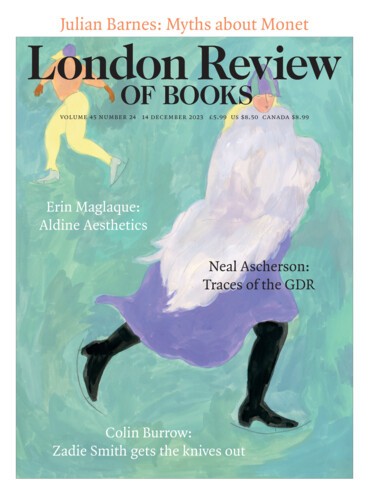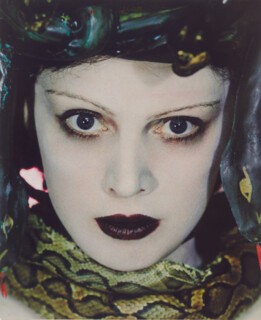When Yevonde made the new case for colour in photography, she also made the case for women behind the camera, controlling the views. ‘Photography without women would be a sorry business,’ she wrote. Who better to advance the art and push colour into a black and white world than those who wore red lipstick and scarlet nail polish?
Born Yevonde Philone Cumbers in 1893 (John Galliano boasted ‘she came from Streatham, just like me’), she always went by the single name, as if she were a long-lost tribe. From the start, she moved purposefully: in 1914 she cut short an apprenticeship to a portrait photographer from whom she had learned to load slides, to set up her own practice. It was a piquant time for the profession. In a reversal of the customary order – clouds of rhetoric and puny progression – the number of London studios run by women doubled in the 1890s, while default misogyny rampaged on. ‘Mastery of technique’ was held by the British Journal of Photography to be something lacking in ‘you women photographers’.
Yevonde photographed those the 20th century thought worth celebrating: the titled, the martial, the royally received. The Mountbattens, just engaged, appear wary; Haile Selassie smiles over his Chihuahua (Yevonde imitated a cat to get the creature going); Barbara Cartland holds up a beaming baby. No poor faces here. But there are artists: John Gielgud as Josephine Tey’s Richard II is chiselled and melting, dripping gold. Shelagh Delaney, more used to being inspected than seen, is focused, elegant, apparently sizing up the photographer. Iris Murdoch, all quiet angles, is rather cornily pictured reading. She is said to have been mistaken for a cleaning lady when she turned up for the shoot. Really? In leaf-patterned stockings?
There are also fantasies, lit up with defiant, glassy, fairground colour. Yevonde’s ‘goddesses’ sequence flirts with irony and with the ridiculous – Diana Mitford winsomely tilts her head to be Venus, Dorothy Warrender’s Ceres might be a gold-encrusted croissant. Yet the series dives into women’s faces. Choosing Madeleine Mayer to represent Medusa because her eyes were ‘the strangest and most intense blue’, Yevonde put a green filter over one light, made her skin deadly pale and her lips the purple that Biba used to favour. Other effects were sprung by accident: glycerine got into the eyes of the model for Niobe and mixing with mascara provoked real tears – gigantic in close-up – and an expression of utter desperation.
Her range of work is handsomely illustrated and sympathetically quizzed in Clare Freestone’s Yevonde: Life and Colour (NPG, £40), written to accompany the exhibition at the revivified National Portrait Gallery. On one page, the scarcely arrested vivacity of a still life in which a toadstool looks like a flying saucer. On another, the daftness of the cover for Woman and Beauty, where a woman with puffed sleeves, a straw hat and a cigarette-holder languidly shells peas. Some of the least flamboyant images are the most disconcerting. Evelyn Waugh’s face is squashed into a tiny picture frame between a potted plant and a copy of Vile Bodies. Double portraits of couples, with back-to-back profiles, raise the question of whether they are fusing or running away. One of these was of Yevonde and her husband, the playwright Edgar Middleton, who called his autobiography I Might Have Been a Success. She also produced self-portraits in which the camera looks like a metallic face. In 1968, she pictured herself in perky miniature, beside a massive studio camera. She is shackled to the great beast by a cable, which could also be a lifeline.
Send Letters To:
The Editor
London Review of Books,
28 Little Russell Street
London, WC1A 2HN
letters@lrb.co.uk
Please include name, address, and a telephone number.


